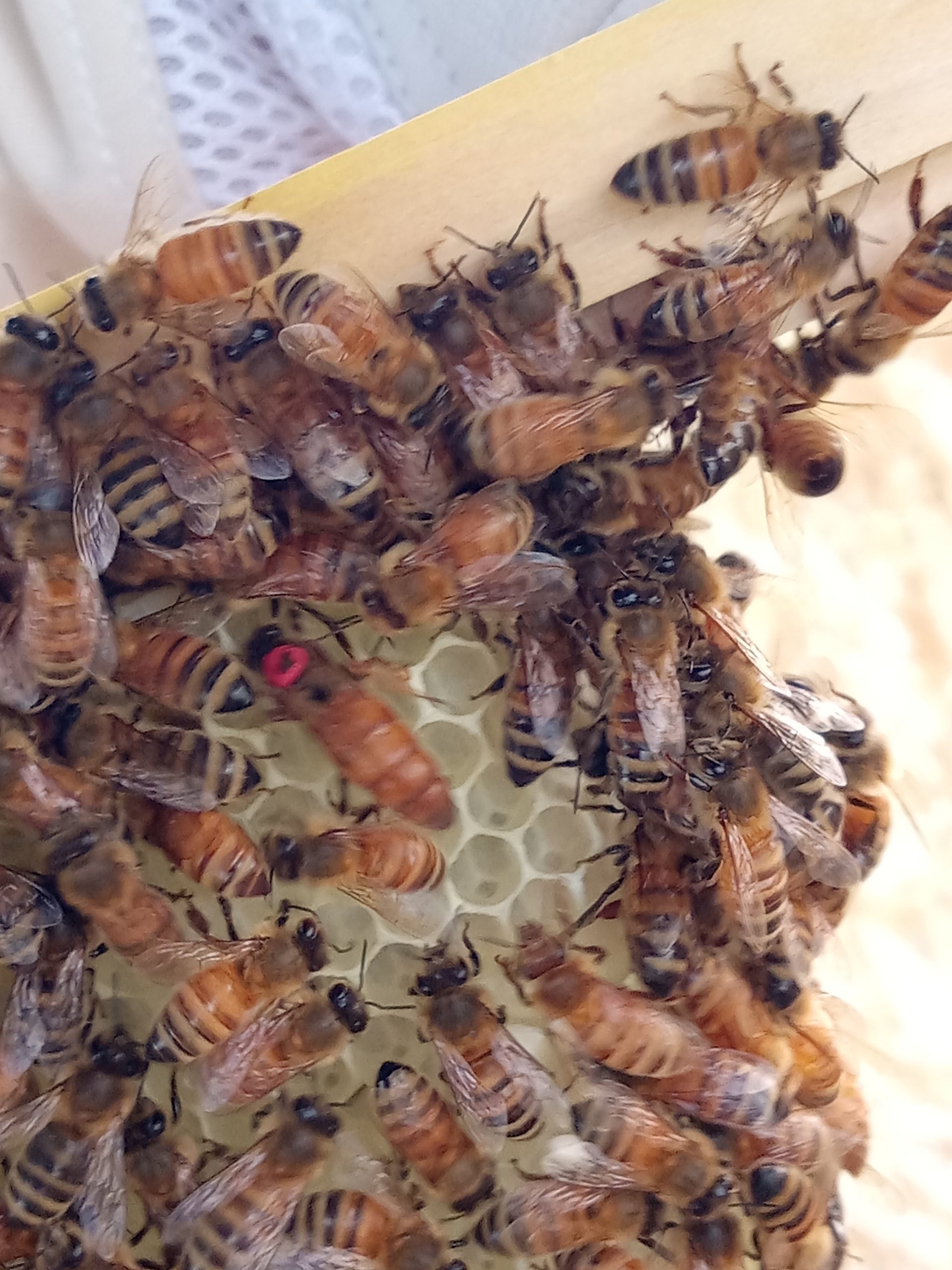honey bees
Superman’s family spent generations making maple syrup. On occasion, the kids and I were roped into helping. Can I tell you something? Maybe two things…(1) real maple syrup is NOT the same thing you buy at the chain supermarket (2) sugarmakers (people who make syrup) deserve every penny of that seemingly high price they put on their product. It is hard, tiring work. When we moved to the farm, it was Superman’s hope that we would do maple syrup or something similar, like honey. At the risk of sounding ungrateful, I wanted neither. Rather, I didn’t want to be the one who did either.
Trudging around in the woods in the Midwest in February is not pleasant. Add tapping hundreds of trees to that with metal tools, spiles, and buckets and you’ve added another layer of misery—at least in my book. Sure, you end up with sugary goodness in the end, but there are many hours of collecting, evaporating, and bottling in between that make you question your sanity and whether or not it’s worth it.
So instead, I was left with the option of a 3 pound package of bees. Sounds pretty harmless, right? Did you know that 3 pounds is approximately 10,000 bees?!?!?! Maybe syrup doesn’t sound so bad after all.
Neither option sounded great to me, plus our woods aren’t filled with maple trees. We do, however, have an abundance of grasses and wildflowers, which are perfect for our pollen-collecting friends. When we got down to it, we realized we were all a little nervous about the harvesting of the honey more than having bee boxes. And wouldn’t you know that there’s an Australian family that solved all of our problems? I can’t even remember now where or when I first heard of the Flow Hive, but it essentially allows a beekeeper to harvest honey with the turn of a key rather than taking frames out of the supers and putting them into extractors. Like every invention since the dawn of man, there are some who love it and some who despise it. I am sure everyone has different experiences, but we decided to roll the dice and purchase a flow hive and a package of three-banded Italian bees.
Around here, bees are installed (put into their brood boxes) in spring. Of course, the day our bees came in—in May—it was snowing. The lady at the apiary said it would be fine to install anyway, but everything I read in books and online said the opposite. Since snow was uncharacteristic in May, we decided to wait a few days. The bees had food in their package and we gave them a little extra just in case. On the third day, the sun finally came out. We suited up and carried them to the hive to “dump” them in. Can I just say, that was one of the most uncomfortable moments I have experienced not only on the farm, but maybe ever. Nothing in life can prepare you for 10,000 bees buzzing about freely after being stuck in a box. But, all’s well that ends well, and the bees settled in immediately.
We checked on the hive once a week. Watching the box go from nothing but empty frames to honeycomb, to larva, to nectar and honey was so incredible. More than any other animal we own, bees show the wonder and awe of our creative and thoughtful God. I don’t know if I could even describe the sense of wonder and curiosity they provoke.
After a few weeks, we were able to add the honey super (the box with the “flow frames” we’d be harvesting from).
It took about a week for the bees to go into the box, and again my patience failed me, but I am learning [slowly] that nature cannot and will not be rushed. One of my favorite things about the Flow Hive is the observation windows, where you can watch the bees without opening the entire hive. Week after week, we checked for capping to see when we could harvest. It’s true what they say: bees make two things, honey and more bees. After a while the only thing we could see through the windows was bees. We are definitely past the 10,000 we started with! In early August, the honey was capped and ready for harvesting. So we washed our jars and headed out.
I’d like to add that beekeepers tend to have success in a myriad of ways, and what works one year doesn’t necessarily work the next (or at least that’s the gist of what I have gotten out of talking to several beekeepers).
Many people expect no harvest their first year and to lose their hive in the winter. This was a great year for honey, and it was ready quite early, so we felt comfortable taking some since they’d have time to replenish before the cold sets in. We only harvested 3 frames (of which some flooded and we did not completely empty) for a total of 13 pounds of raw, unfiltered honey. Let me just tell you, the harvesting was effortless. Again, we are newbies, so take the review for what it is, but we have golden, beautiful, delicious honey at the literal turn of a key.






